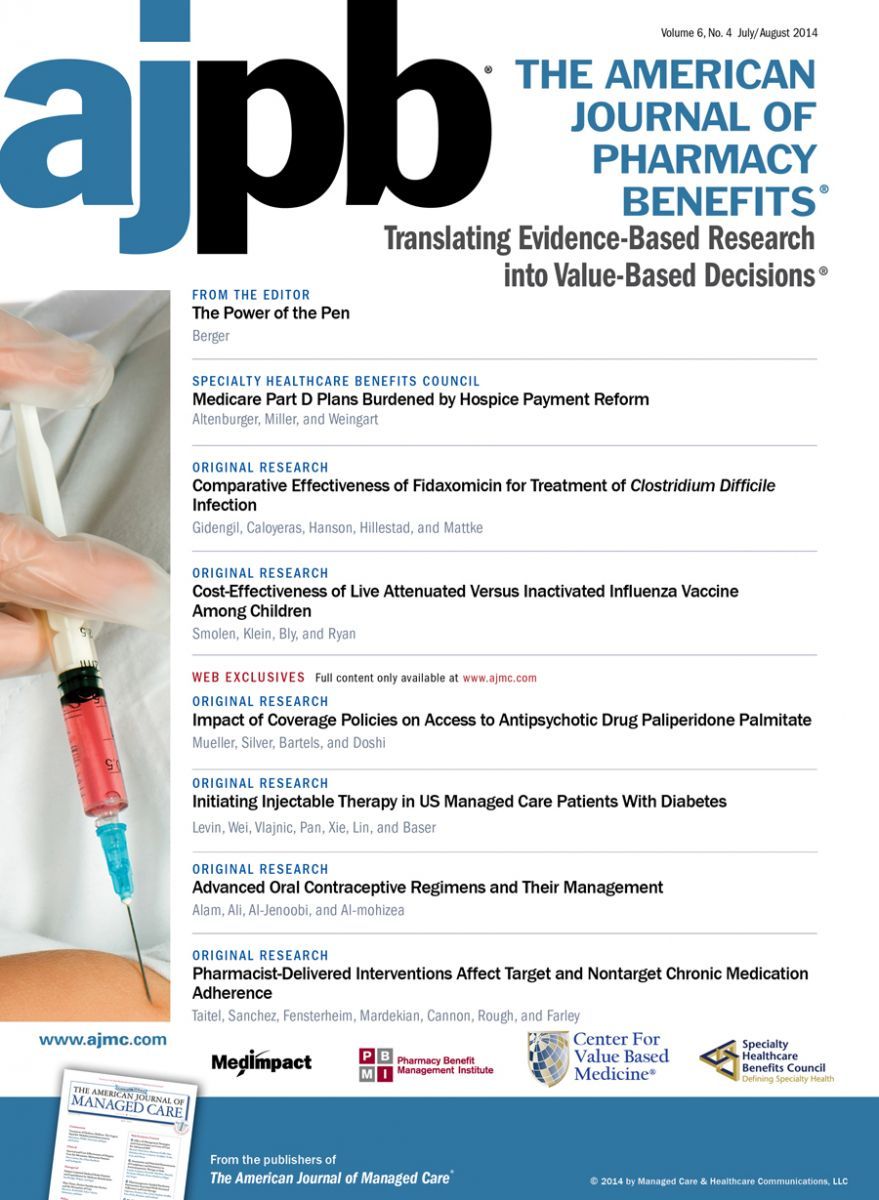Publication
Article
AJPB® Translating Evidence-Based Research Into Value-Based Decisions®
The Power of the Pen
Ten steps need to be taken to help payers more adequately address the problem of inappropriate prescribing of pain medications.
It has always been said that physicians are the greatest influencers of what medications are prescribed to patients due to their “power of the pen.” This sway has created an environment in which pharmaceutical manufacturers and healthcare insurers over the years have spent a great deal of time and money on “educating” the provider regarding the drug choices that they are making. During my time at Caremark, we had a legion of clinical pharmacists who would educate physicians on generics and other cost-saving alternatives they could consider for their patients who were Caremark beneficiaries. Initially, the impacts these pharmacist/physician visits was mitigated by the lack of trust and the absence of an ongoing relationship between the 2 parties. As the relationships matured, we saw a greater impact being made by the advice we were giving the physicians.
We all know that pharmaceutical representatives were working in a similar manner to educate physicians on the medications their companies were manufacturing. Through the years, greater scrutiny was placed on the manufacturers in regard to physician “detailing.” This was due to increasing concern that the pharmaceutical manufacturers were unduly influencing physicians. I would argue that most physicians focused more on appropriate medication prescribing then they were given credit for. Golf balls or pens do not influence most of us. This culminated in Physician Financial Transparency Reporting also known as the “Sunshine Act,” being created as part of the Affordable Care Act.
While all this has been occurring, an interesting phenomenon has been taking place: others are also gaining the power of the pen. Toward the end of the last century, nurse practitioners gained prescribing rights. In some states, they had independent prescribing rights whereas in other states nurse practitioners were overseen by physicians. More recently, we are beginning to see pharmacists gaining the right to prescribe medications. In most cases, this is being done through collaborative practice agreements. In these cases, pharmacists are allowed to start or modify medication therapy. In addition to nurse practitioners and pharmacists, a number of other ancillary healthcare professionals have gained the right to prescribe medications to patients.
I want to take a moment and tell you all that I am not opposed to this trend. In fact, to a large degree I believe that this makes sense. I know that a number of my physician colleagues would disagree with me. My opinion stems from the fact that we do have a physician access problem. This problem can be found both in primary care and in a number of specialties. Have you tried to see an endocrinologist lately? In many areas of the country, getting an appointment can take months. Broadening prescribing capabilities is one way to address an increasing physician availability issue.
I do set forth 2 areas of caution regarding the increasing number of healthcare providers that have prescribing rights. The first caution focuses on training. Physicians receive education on medications formally early in medical school and then more informally during their clinical training as medical students and residents. It will be increasingly important that nurses and pharmacists receive both the pharmacology and clinical training necessary to be able to make sound medication decisions. In many cases, this is happening, and I am not making any judgments. This is especially true for those pharmacists who are taking extra training as a clinical pharmacist. The second caution focuses on the need to improve inter-professional communication. As it is today, we struggle with medication reconciliation. I do worry that with more people prescribing medications to a single patient, the risk for medication errors increases.
As prescribing rights continue to expand, the “power of the pen” will no longer lie solely with physicians. If we as a society are concerned about undue influence on prescribing decisions, we will need to broaden the focus beyond physicians and include our nurse practitioner and pharmacist peers.
What do you all think?







